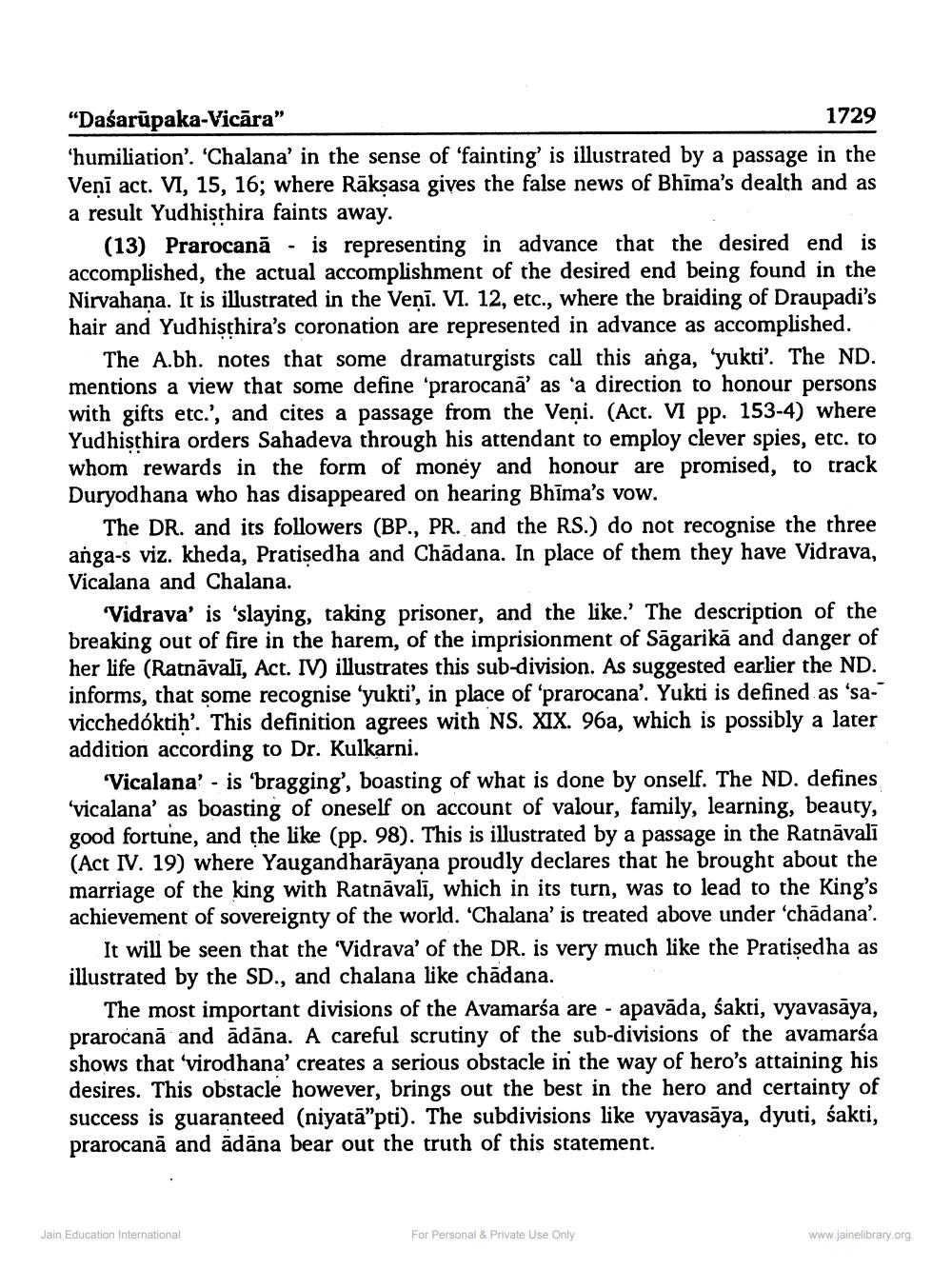________________
"Dašarūpaka-Vicāra"
1729 'humiliation'. 'Chalana' in the sense of 'fainting' is illustrated by a passage in the Venī act. VI, 15, 16; where Räksasa gives the false news of Bhima's dealth and as a result Yudhisthira faints away.
(13) Prarocanā - is representing in advance that the desired end is accomplished, the actual accomplishment of the desired end being found in the Nirvahana. It is illustrated in the Venī. VI. 12, etc., where the braiding of Draupadi's hair and Yudhisthira's coronation are represented in advance as accomplished.
The A.bh. notes that some dramaturgists call this anga, 'yukti'. The ND. mentions a view that some define 'prarocanā' as 'a direction to honour persons with gifts etc.', and cites a passage from the Veņi. (Act. VI pp. 153-4) where Yudhisthira orders Sahadeva through his attendant to employ clever spies, etc. to whom rewards in the form of money and honour are promised, to track Duryodhana who has disappeared on hearing Bhīma's vow.
The DR. and its followers (BP., PR. and the RS.) do not recognise the three anga-s viz. kheda, Pratisedha and Chādana. In place of them they have Vidrava, Vicalana and Chalana.
Vidrava' is 'slaying, taking prisoner, and the like.' The description of the breaking out of fire in the harem, of the imprisionment of Sāgarikā and danger of her life (Ratnāvalī, Act. IV) illustrates this sub-division. As suggested earlier the ND. informs, that some recognise 'yukti', in place of 'prarocana'. Yukti is defined as 'savicchedóktih'. This definition agrees with NS. XIX. 96a, which is po addition according to Dr. Kulkarni.
Vicalana' - is 'bragging', boasting of what is done by onself. The ND. defines 'vicalana' as boasting of oneself on account of valour, family, learning, beauty, good fortune, and the like (pp. 98). This is illustrated by a passage in the Ratnāvali (Act IV. 19) where Yaugandharāyana proudly declares that he brought about the marriage of the king with Ratnāvalī, which in its turn, was to lead to the King's achievement of sovereignty of the world. 'Chalana' is treated above under 'chadana'.
It will be seen that the 'Vidrava' of the DR. is very much like the Pratisedha as illustrated by the SD., and chalana like chādana.
The most important divisions of the Avamaría are - apavāda, śakti, vyavasāya, prarocan, and ädāna. A careful scrutiny of the sub-divisions of the avamaría shows that 'virodhana' creates a serious obstacle in the way of hero's attaining his desires. This obstacle however, brings out the best in the hero and ce success is guaranteed (niyatā"pti). The subdivisions like vyavasāya, dyuti, śakti, prarocanā and ādāna bear out the truth of this statement.
Jain Education International
For Personal & Private Use Only
www.jainelibrary.org




